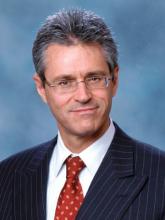I can think of no better example of how strategic formulation must translate into dexterously executed action to effect change than health care reform, a topic we extensively cover in this month’s article. And so it is appropriate that we dedicate this month’s article to concluding our consideration of action as an important step in creativity.
Just as some reform measures and proposals seek to recognize the intrinsic nature of neurologists, so then do we include by considering the intrinsic biological differences between people that render some better equipped to execute a particular plan successfully than can their neighbors. Biology matters. As recent sports scandals have suggested, athletic performance can be enhanced by drugs such as anabolic steroids and amphetamines. Some neuroscientists have even advocated the cosmetic use of therapeutic drugs as "cognitive enhancers." Drugs are exogenous biological influences, but there are endogenous sources, too.
Some of the more readily visible biological differences thought to explain enhanced performance have regarded brain structure. Regional differences in brain function are reflected to some extent by differences in structure. For example, the planum temporale, an auditory region of the temporal lobe, is larger in the language dominant (typically left) hemisphere (Science 1968;161:186-7), a trait shared by nearly all people.
Some regional alterations reflect individual differences in use. The lateral aspect of Heschl’s gyrus is larger in the left hemisphere among musicians whose pitch perception strategy favors fundamental frequency or rapid temporal processing, but larger instead in the right hemisphere among musicians whose pitch perception strategy favors spectral pitch processing. This region also is physically larger in accomplished musicians, compared with nonmusicians (Nat. Neurosci. 2005;8:1241-7).
Studies of Albert Einstein’s brain revealed a greater density of neurons in the cerebral cortex than normal (Neurosci. Lett. 1996;210:161-4), and an aberrant Sylvian fissure with disproportionately larger and more symmetric parietal lobes (Lancet 1999;353:2149-53). The significance of these differences has prompted speculation that the greater neuronal density reduced the time delay for one neuron to communicate with another, and the enlarged parietal lobes enhanced his inherent math and spatial skills, arguments that have some parallels in comparisons between low and high IQ individuals (Trends Neurosci. 1997;20:365-71).
Genetic variations have been considered another source of individual differences. The performances of identical twins on a variety of cognitive and physiologic tests are far more similar than the comparative performances of genetically unrelated people (Behav. Genet. 2004;34:41-50). The search for genetic variations that enhance cognitive performance has revealed several that influence memory, including the serotonin 5-HT2a receptor (Nat. Neurosci. 2003;6:1141-2), brain-derived neurotrophic factor (J. Neurosci. 2003;23:6690-4), KIBRA (found in kidney [KI] and brain [BRA]) (Science 2006;314:475-8), and the dopamine D2 receptor (Science 2007;318:1642-5). Variations of genes related to serotonin are also thought to affect our reaction to novelty and anxiety provoking situations (J. Neurosci. 2005;25:6460-6) that in turn might influence our drive for seeking creative change. Allelic variations of the gene for catechol-O-methyl transferase (involved in dopamine metabolism, the neurotransmitter of the mesolimbic reward pathway) correlate with performance on a problem-solving task (Am. J. Psychiatry 2002;159:652-4). Interactions between genes and environmental factors may result in unexpected or "emergent" behaviors that may also affect creativity, such as the difference in emotion processing between men and women (Curr. Opin. Neurobiol. 2004;14:233-8).
Less obvious sources of enhanced performance are suspected to reflect individual physiological differences. A functional MRI study comparing the calculation skills of Rudiger Gamm, a mathematical calculation prodigy with nonexpert calculators showed that both activated brain regions serving arithmetic, quantity, and visual imagery, but only Gamm additionally activated memory regions (Nat. Neurosci. 2001;4:103-7). In a related study, expert abacus calculators activated the same areas for mental calculation as nonexperts, but additionally activated visuospatial cortices, congruent with the greater visuospatial demands of an abacus-based strategy (NeuroImage 2003;19:296-307). These studies suggest that the neural networks underlying prodigy-level skill may be different than those underlying ordinary-level skill. The regions required for the basic function are active in both, but the prodigies have another functional system in their skill-related network that seems to reflect their training background. It is unclear if the extra system is inherently available to anyone with sufficient practice – and if so, to what degree – or is instead a form of biologically conferred "performance synesthesia."
Disease-mediated biological alterations of brain structure and function seem an unlikely source of heightened ability, yet autistic savants are a well-known group of individuals whose extraordinary talent resides in a circumscribed area that is grossly disproportionate to their general intellect. Savant skills have included memory, mathematics, music, calendrical calculations, and, less consistently, mechanical or artistic skill.


